Stories
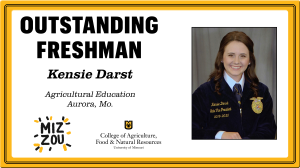
May 11, 2020
CAFNR Outstanding Freshman: Kensie Darst
Kensie Darst’s best advice to high school students gearing up for their first semester of college may be common encouragement, but it’s held true for her – don’t be afraid to step outside of your comfort zone. Darst, from Aurora, Mo., followed her own advice when she made the decision to step foot on the University of Missouri campus this past fall. “Being from a small, rural community in southwest Missouri, it is difficult for many graduating high school seniors to want to attend a college that seems to host more students than our own town’s population,” Darst said. “Making…

May 9, 2020
Jessica Kansman Honored with Student Leadership Award
Described as the embodiment of a student leader, Jessica Kansman, a graduate student in Plant, Insect and Microbial Sciences, has served on numerous board positions where she has organized and help planned a variety of social and recruitment events. For this, she received the Excellence in Student Leadership Award as part of the Mizzou Graduate Professional Council Awards. Her passion for mentorship and communication has had a deep impact on both graduate and undergraduate student. Not only does she do extensive outreach for the community, Jessica also remains committed to assisting her fellow colleagues.
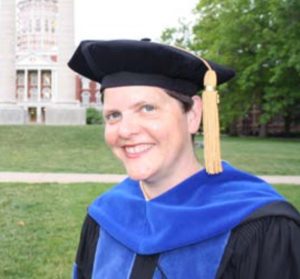
May 8, 2020
Lisa Groshong Earns MU Distinguished Dissertation Award – Discipline Winner
Lisa Groshong is being honored by the MU Graduate School with the MU Distinguished Dissertation Award for her dissertation titled “Looking Broadly and Deeply into Perceptions of Local Climate Change Impacts Among Visitors to Missouri State Parks.” This work was supervised by Sonja Wilhelm Stanis, associate professor in the School of Natural Resources. The results of Lisa’s research suggest opportunities for state park managers to take action toward locally oriented climate change mitigation, education and communication. Groshong is currently a postdoctoral fellow in the School of Natural Resources at the University of Missouri.
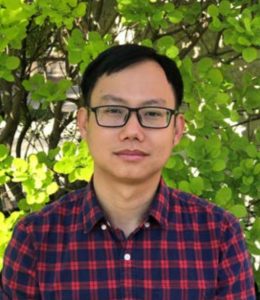
May 8, 2020
Man Huynh Honored with Postdoctoral Research Award
Man Huynh, a postdoctoral fellow in Plant Sciences, has received the Postdoctoral Research Award from the MU Graduate School. He developed an artificial diet to address the impact of northern corn rootworm. This pest is devastating to maize crops across North America. This research led to multiple first-authored publications, external funding and a commercially-available diet in partnership with Frontier Agricultural Sciences. His advisor, Debbie Finke, associate professor in the Division of Plant Sciences, shared this sentiment in her nomination letter for the award: “Dr. Huynh is a selfless researcher who takes the time to teach and train others, including colleagues…

May 8, 2020
Ben Knapp Earns Purdue Forestry and Natural Resources Outstanding Young Alumni Award
The Outstanding Young Alumni Award recognizes the accomplishments of individuals who have excelled in professional and civic accomplishments and have graduated from Purdue FNR within the last 15 years. Ben Knapp, who earned his bachelor’s degree in forestry from Purdue in 2003, is an associate professor of silviculture in the School of Natural Resources at the University of Missouri. After completing his master’s and doctorate degrees at Clemson in 2005 and 2012 respectively, Knapp began teaching at Missouri as a tenure-track assistant professor. In 2018, he was promoted to associate professor. He teaches both undergraduate and graduate courses in silviculture…
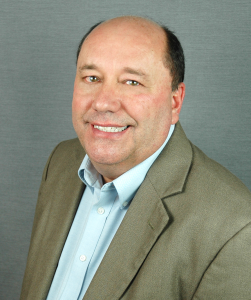
May 8, 2020
Harold Chapman Named Alumnus of the Year by CAFNR Alumni Association
Harold Chapman, who received a bachelor’s in Ag Mechanization from CAFNR in 1985, has been named 2020 Alumnus of the Year by the CAFNR Alumni Association. Chapman is the complex general manager for eight Missouri locations of Crown Power and Equipment and was instrumental in helping design an equipment lease program with CASEIH equipment that has transformed CAFNR’s Missouri Ag Experiment Station and its network of research centers across the state. Chapman worked with John Poehlmann, now-retired Assistant Director, Agricultural Experiment Station Director, and Don Schindler, Manager of Farm Operations, to provide the research centers with top-of-the-line equipment. The program…
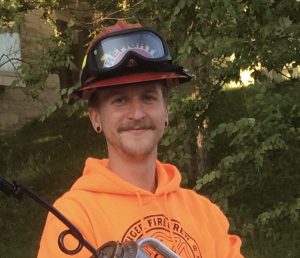
May 7, 2020
Q&A With Drew Anderson
What are your job duties/job responsibilities in the College of Agriculture, Food and Natural Resources? I am the research specialist at Baskett Research Center in Ashland. The position is a “jack of many trades” situation, which I really enjoy. Much of the work that I do is collecting data and measurements for ongoing projects such as the National Atmospheric Deposition Program, AmeriFlux, and research from both faculty and students. I also handle outreach and communications, maintain the trails and grass areas, and make maple syrup. How long have you worked in CAFNR? I started working for CAFNR in May of…
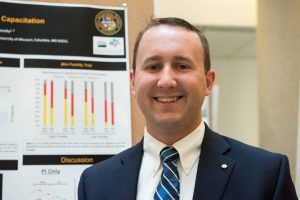
May 7, 2020
Karl Kerns Honored with Distinguished Dissertation Award
Karl Kerns, a postdoctoral fellow in animal sciences, has received the MU Distinguished Dissertation Award from the Graduate School as part of the Sixth Annual Graduate and Postdoctoral Award Ceremony. Kerns’ dissertation, “Zinc Ion Fluxes on the Pathway to Mammalian Sperm Fertilization Competency,” was supervised by Peter Sutovsky, professor of animal sciences. The research used a combination of new techniques to explain sperm zinc ion fluxes and develop a new sperm fertilization competency test. The test has been submitted for international patenting by the University of Missouri. The findings from Kerns’ dissertation have been published in the highly regarded Nature…
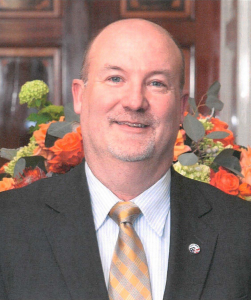
May 7, 2020
Glenn Blumhorst Honored with the Citation of Merit Award from the CAFNR Alumni Association
Glenn Blumhorst, who received a bachelor’s degree in Agriculture (Ag Econ emphasis) from CAFNR in 1985, was honored with the 2020 Citation of Merit Award from the CAFNR Alumni Association. As the President and CEO of the National Peace Corps Association, Blumhorst, who also received an MPA (International Development Management emphasis) from Mizzou in 1987, has transformed the 30-year-old non-profit into a robust, mission-driven social impact organization mobilizing 225,000 former Peace Corps volunteers, staff and 175 affiliate groups to act on their Peace Corps ideals. Before his current position, which he has held since 2013, he has had various roles…
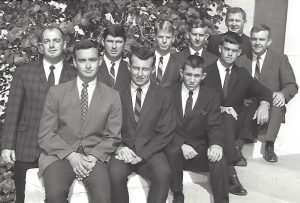
May 6, 2020
Reflections: G.B. Thompson
When I was in grade school in Pettis County (Quisenberry Grade School), there was a World Book Encyclopedia with a chapter on animals in it. I practically wore that chapter in the book out I read it so often. I had a passion for animals incredibly early. I just loved to be around livestock. I grew up on a dairy farm, where we also raised hogs and sheep. I got involved in 4-H at a young age and was part of the 4-H livestock judging team right away. J.U. Morris was our county Extension agent and coached the livestock judging…